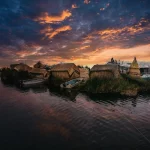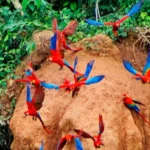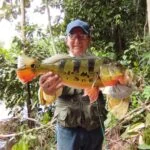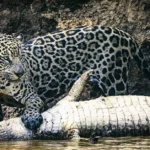
Jabiru Stork: Everything About the Largest Stork in the Americas

📋 Índice de Contenido
- 1 Where Do Jabiru Storks Live?
- 2 Curiosities and Surprising Facts About the Jabiru Stork
- 3 Behavior and Diet of the Jabiru Stork
- 4 Differences Between the Jabiru Stork and Other Storks
- 5 Ecological Importance and Conservation of the Jabiru Stork
- 6 The Pantanal: Ideal Home of the Jabiru Stork
- 7 What Time of Day Are Jabiru Storks Most Active?
- 8 Places Around the World to Spot the Jabiru Stork
- 9 Places in Brazil to Spot the Jabiru Stork
- 10 Frequently Asked Questions About the Jabiru Stork
The jabiru stork (Jabiru mycteria) is the largest stork in the New World. Impressive size makes it unique: it reaches between 1.30 and 1.60 meters in height and has a wingspan of up to 2.80 to 3 meters. Its name comes from the Guaraní language and means “swollen neck”, referring to the red pouch at the base of its neck. Its immaculate white plumage contrasts with its featherless black head and neck, and a red band at the neck's base.
It is a water bird that lives in rivers and swamps: it feeds mainly on fish, mollusks, insects, and amphibians, and occasionally on reptiles and small mammals. Unlike other scavenger storks, the jabiru actively fishes in shallow waters.
The jabiru stork has white plumage with a black head and neck and a red pouch at the base of the neck, making it stand out even from a distance. Males are approximately 25% larger than females. These birds are silent: they do not sing, but produce a characteristic bill-clattering sound when courting or alerting to danger. Pairs are monogamous for life, and reuse the same enormous nest every year (nearly 2 meters in diameter), built at the tops of very tall trees.

Where Do Jabiru Storks Live?
The jabiru stork is found exclusively in the Americas. It can be seen from the Yucatán Peninsula (southeastern Mexico), Central America (Belize, Costa Rica, Nicaragua), and much of South America. In South America, it is abundant in Brazil (especially in the Pantanal), the plains of Venezuela and Colombia (Orinoquía), and the flooded savannas of Paraguay and Bolivia. It also ranges to the north of Argentina (Esteros del Iberá).
It prefers wet habitats: rivers, swamps, wetlands, and flooded areas with plenty of fish and amphibians. In these shallow waters, the jabiru moves carefully, using its long bill to capture prey.

Curiosities and Surprising Facts About the Jabiru Stork
- It is the tallest flying bird in Central and South America (up to 1.6 m) and has the largest wingspan (up to 3 m) in the Western Hemisphere.
- Its bill can measure 30 cm in length.
- It exists only in the Americas, from Mexico to Argentina.
- Its plumage is almost entirely white, except for its featherless black head and neck and a vivid red band at the base of the neck.
- That red band can change color: bright pink when calm, and scarlet when irritated.
- Unlike many storks, the jabiru is not a scavenger: it hunts live animals.
- During dry season, it may fish in groups to corral fish.
- It is a mute bird: it only communicates by bill-clattering.
- It can live 30–40 years in the wild.
- It is monogamous for life. Each year it reuses the same massive nest built high in the trees.
- Both parents incubate the eggs, and the red neck color intensifies during the breeding season.
- The nest can last decades, being enlarged each year with more sticks.
- It is diurnal: it flies and feeds during the day, taking advantage of thermal air currents.
- Its diet is very diverse: fish, mollusks, amphibians, turtle hatchlings, and caimans.
- In flight, it displays spectacular contrasts: bright white feathers, black legs, and dark bill.
- It is a symbol of the Brazilian Pantanal, especially in Mato Grosso do Sul.
- It adds great value to ecotourism by attracting photographers and birdwatchers.
- It is listed as Least Concern, but threatened by deforestation and wildfires.
- It can defend its nests from predators such as raptors or even jaguars.
- Jabiru stork pairs build massive nests high in trees, adding sticks each season; nests can be used by many generations.

Behavior and Diet of the Jabiru Stork
The jabiru is generally a solitary bird or found in pairs, except when gathering to feed in highly productive areas. Outside of breeding, it does not form dense colonies. During the mating season, each pair defends its nesting territory. To hunt, the jabiru walks slowly through aquatic vegetation, holding its bill slightly open at a 45° angle. When it detects prey by touch, it snaps its bill shut instantly and tosses its head up to swallow the animal. Thanks to its strong, curved bill, it captures large fish, and also frogs, young turtles, and even small swamp caimans.
Diet: The jabiru mainly eats fish, frogs, mollusks, and aquatic insects. It has been observed fishing with its foot, digging into mud to unearth prey. During dry seasons, it takes advantage of fish concentrations in shallow pools, sometimes working in groups with other jabirus or herons to corral fish. It also eats dried carrion of dead fish, helping to recycle organic matter in the ecosystem. As a top predator, it helps control local fish and amphibian populations.
Reproduction: When the jabiru's neck becomes more intensely colored during breeding season, the pair engages in courtship displays. They begin incubating in autumn (dry season in the Southern Hemisphere) when food is abundant. Parents take turns caring for 2 to 4 eggs. Chicks hatch with white plumage and take several months to develop adult features.

Differences Between the Jabiru Stork and Other Storks
The jabiru stands out from similar species:
- The wood stork is smaller and lacks the red band on the neck.
- The African marabou, though similar in size, is a scavenger, while the jabiru hunts live prey.
- The jabiru has a thicker, more curved bill.
- It is easy to identify by its great size and signature red neck band.
Ecological Importance and Conservation of the Jabiru Stork
The jabiru is an ecological indicator of healthy wetlands. It controls fish and amphibian populations, and by feeding on carrion, it helps prevent waterborne diseases. It attracts ecotourism, generating sustainable income in regions like the Pantanal. Although it is classified as “Least Concern”, its habitat is threatened by deforestation and wildfires. Wetland conservation and protected areas are necessary for its survival.

The Pantanal: Ideal Home of the Jabiru Stork
The Pantanal — spanning Brazil, Bolivia, and Paraguay — is the largest tropical wetland on the planet. It is full of shallow ponds and rivers rich in fish, ideal for the jabiru. In the northern Pantanal (Mato Grosso), the jabiru remains year-round, adapting to the flood cycles. It is so abundant that it has become a regional emblem.
What Time of Day Are Jabiru Storks Most Active?
The jabiru is a diurnal species: it hunts and flies during the day. It is most active at dawn and dusk, when the light is golden and conditions are better for gliding. During the dry season (May to October) it gathers around lagoons, making them easier to spot. The jabiru feeds in shallow water, using its long bill to catch fish. It is more active during daylight hours, especially in the mornings and late afternoons of the dry season.

Places Around the World to Spot the Jabiru Stork
Although the Brazilian Pantanal is its most famous refuge, the jabiru stork can be seen in several American countries with wetlands. Notable locations include:
- Southeast Brazil (Pantanal): The top destination to see jabirus, especially in Mato Grosso and Mato Grosso do Sul.
- Wetlands of Mexico and Central America: Seen in the Yucatán Peninsula (Tabasco, Campeche) as well as Belize, Nicaragua, Costa Rica, and the Caribbean coast of Guatemala. In Costa Rica, it is known as “galán sin ventura”.
- Llanos of Colombia and Venezuela: Vast flooded savannas (Orinoquía) where the jabiru is common.
- Amazon and the Guianas: Found in riparian zones of Guyana, Suriname, northern Brazil, and Peru.
- Southern Argentina (Iberá and Esteros): The swamps of Corrientes are an emerging destination to see wild jabirus.
- Peru, Bolivia, and Paraguay: In the Peruvian Amazon, eastern Chaco, and river deltas (Beni, Pantanal of Paraguay) there are stable populations.

Places in Brazil to Spot the Jabiru Stork
- Transpantaneira (MT-060): ideal observation route with bridges and lagoons.
- Pantanal Matogrossense National Park (MT): protected area with many jabiru storks.
- Taiamã Ecological Reserve (MT): shallow wetlands ideal for aquatic birds.
- Porto Jofre (MT): base point for safaris with high probability of seeing jabiru storks.
- Cuiabá River and tributaries (MT): ideal for boating and spotting.
- Sierra do Amolar (MS): remote area rich in biodiversity.
- Chapada dos Guimarães (MT): although less common, they can also be seen here.
Lorenzo Expeditions is a specialized agency offering photo safaris in the Pantanal, combining jabiru stork, jaguar, and other species sightings.
Frequently Asked Questions About the Jabiru Stork
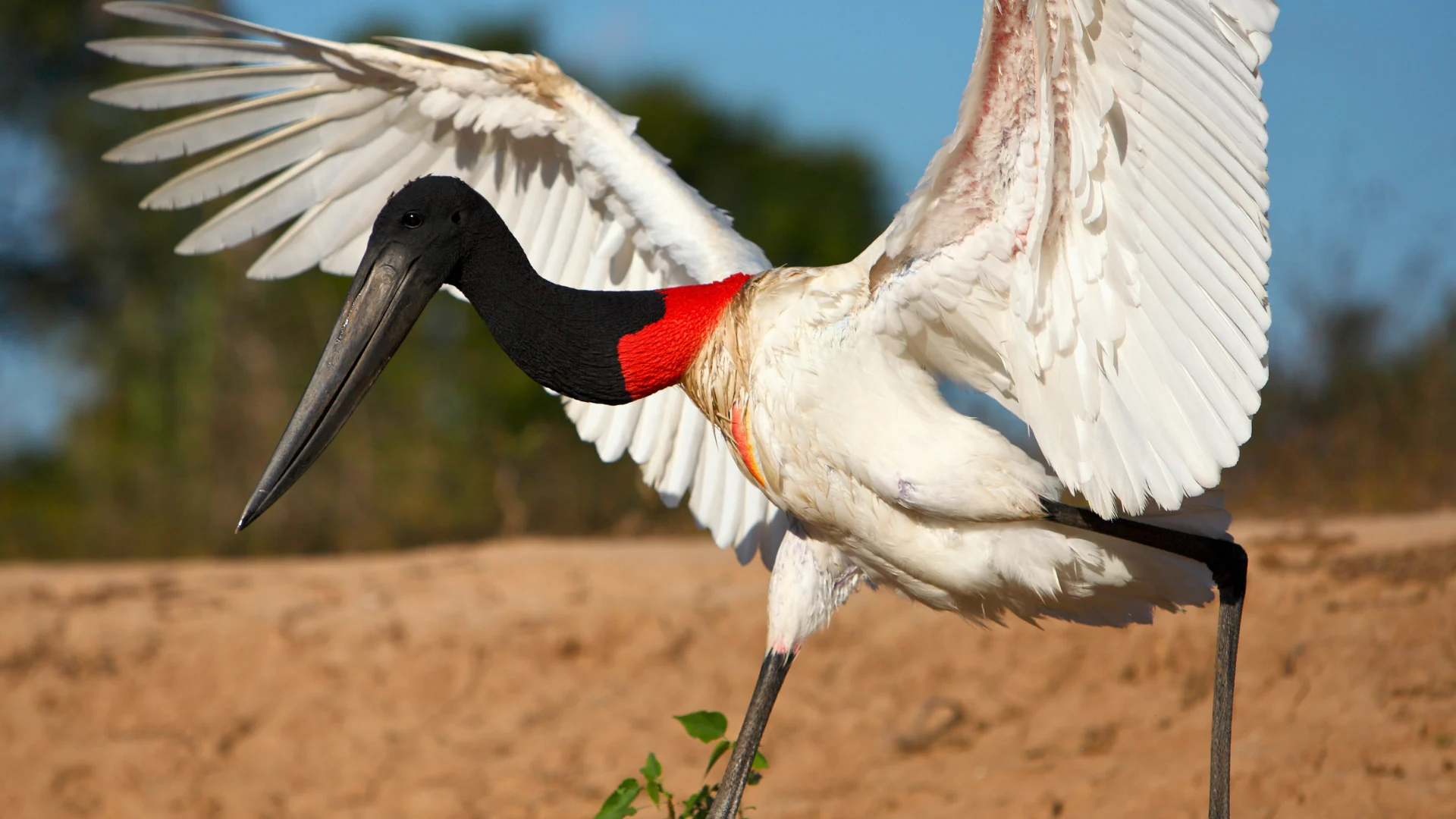
1. What is the wingspan and size of the jabiru stork?
The jabiru stork can reach a height of up to 1.6 meters (5.2 ft) and a wingspan of up to 3 meters (9.8 ft), making it one of the largest birds in the Americas. It weighs between 7 and 8 kilograms (15–17 lbs), allowing for powerful and elegant flight.
2. What does the jabiru stork eat?
The jabiru's diet consists mainly of fish, frogs, mollusks, and aquatic insects, but it also feeds on small reptiles such as turtles and young caimans, taking advantage of its strong beak to capture a variety of prey in its habitat.
3. Where can we observe jabiru storks in the wild?
The jabiru can primarily be seen in the Brazilian Pantanal, known for its abundance of these birds. It is also found in countries like Mexico, various parts of Central America, the Orinoco region, Amazon Basin, Paraguay, Bolivia, and Argentina, inhabiting wetlands and lagoons.
4. What is its conservation status?
Currently, the jabiru is listed as Least Concern by the International Union for Conservation of Nature (IUCN). However, its natural habitat is threatened by human expansion and wetland alteration, which could impact its population in the long term.
5. What is the best time to see jabiru storks in the Pantanal?
The best time to spot jabiru storks in the Pantanal is during the dry season, from May to October, when the birds tend to gather in groups around concentrated water bodies, making them easier to observe and photograph.
6. What travel agency is recommended for a Pantanal tour?
Lorenzo Expeditions is recommended due to its extensive experience in the region, offering specialized tours and photo safaris that ensure safe sightings and an authentic experience in the Pantanal.

The jabiru stork (Jabiru mycteria) is the largest stork in the New World, reaching up to 1.6 m in height and a 3 m wingspan. It inhabits rivers and wetlands throughout Latin America, especially in the Brazilian Pantanal. It feeds on fish, amphibians, and insects, and is monogamous for life. Its giant nest can be used for decades. It is a symbol of regional ecotourism. Contact us and book your trip to the Brazilian Pantanal.
Tours Where You Can Spot the Jabiru Stork
Random Posts

Is a tour guide necessary to visit Machu Picchu?

Could natural treatments have helped Amy Winehouse?

Reptile Tour in Tambopata: Discover the Peruvian Amazon

 Español
Español  Português
Português 
 English
English 












